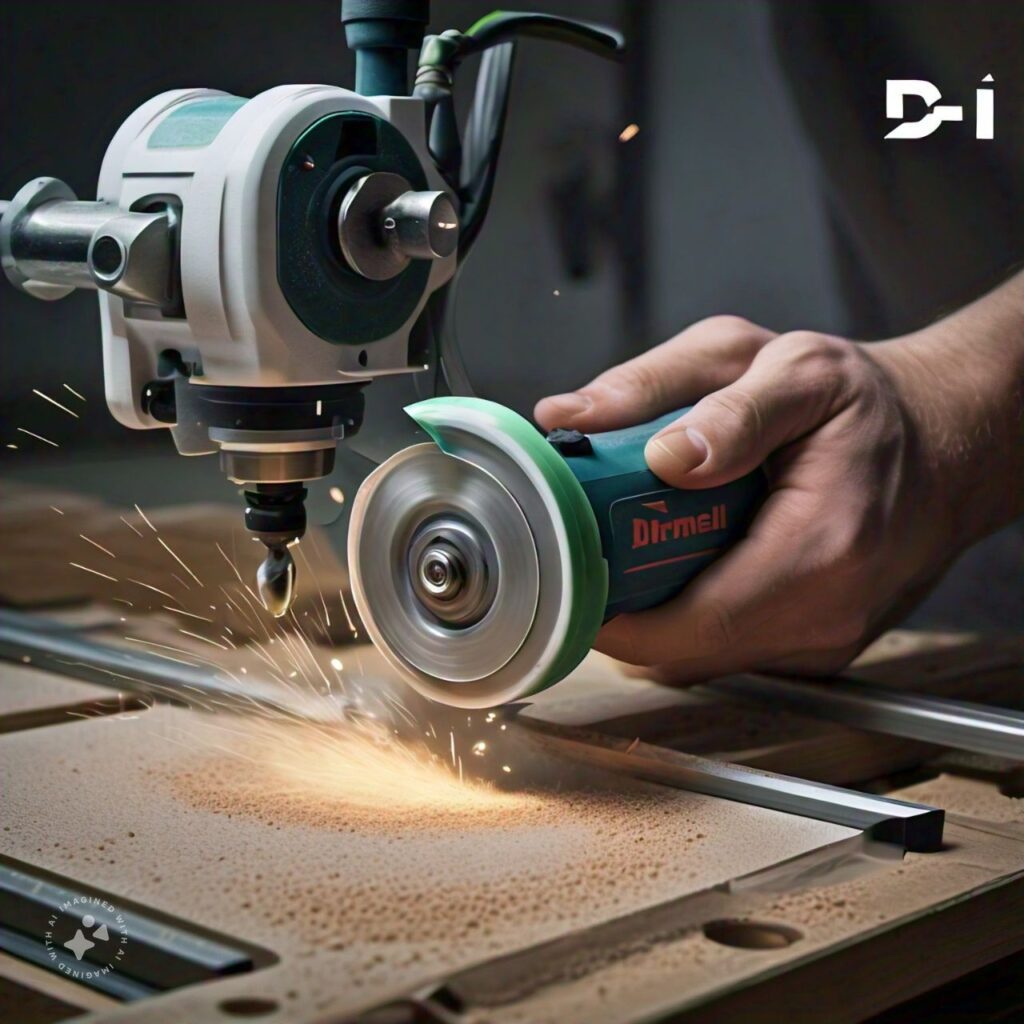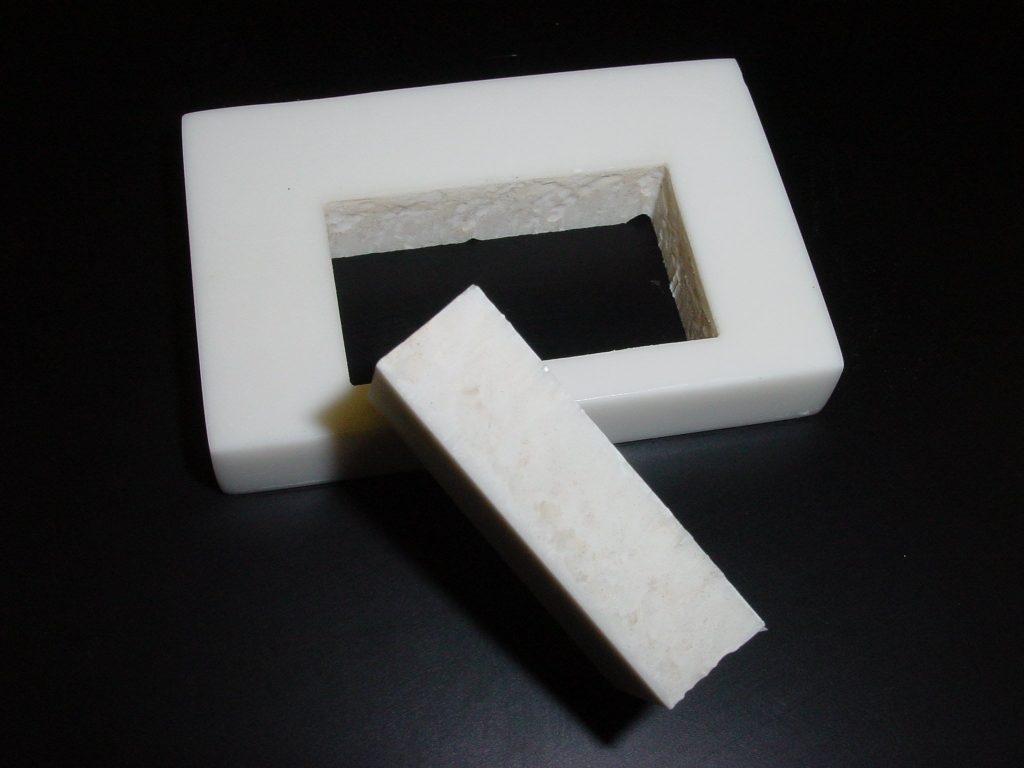Corian is still one of the most popular countertop materials on the market. Corian is the right product for those who want something better than laminates (Formica) and don’t want the high expense of granite or marble. Corian countertops are durable and can be refinished as the finish goes through the material. They can also be cut and shaped with standard woodworking tools, making them workable for the do-it-yourselfer. Stone countertops generally require the services of a specialist who has the right tools to work with.
Corian is an acrylic plastic product. 12mm (0.47 in.) thick sheets are most commonly used for countertops, although 6 mm (0.24 in.) and 19 mm (0.75 in.) thick sheets are also manufactured. Two thicknesses of Corian are bonded together for countertop edges, providing enough depth for cutting various molding patterns into the edge.
What makes Corian special, as opposed to other acrylic plastic, is that it is mineral-filled. The colors and patterns in the material are ground minerals mixed into the plastic before being extruded into sheets. This is how they develop their unique patterns and ensure that they extend through the entire material thickness.
Unfortunately, the combination of Acrylic plastic and ground minerals can make Corian hard to cut. Acrylic plastics tend to chip when cut with high-speed tools, especially if the blades are dull. Adding the minerals makes the Corian hard on the blades, dulling them quickly. For both of these reasons, carbide-tipped blades and bits should be used whenever possible.
General Cutting of Corian

Corian countertops usually come from the factory cut to order in the size needed for your project. The material is expensive enough, at $40 to $65 per square foot, that waste is not desired. Allowing the factory to provide countertops of different sizes helps reduce waste and lower costs.
But there are always exceptions: changes to plans or errors in measurement that require cutting on the job site. In those cases, care must be taken with the Corian so as not to chip, scratch, or otherwise damage it.
Cutting the Corian to size is normally done with a circular saw. Any blade that will cut wood will probably work, but the best is a triple-chip carbide blade. Cutting from the back helps ensure that any chips on the edge of the cut are hidden and not laid out for everyone to see. Taping over the cut line with masking tape and making the cut slowly can both help reduce the amount of chipping.
Cutting holes in Corian, like those needed for sinks, is pretty much like cutting them through a laminate countertop, with the exception that extra time and care need to be taken to avoid damaging the Corian. It needs to be cut slower than plywood to avoid damage.
DuPont is adamant that handheld jigsaws should not be used to cut Corian. One problem is that most of us don’t have a portable CNC mill to cut out that hole for us. So, the jigsaw it is, just don’t let anyone from DuPont see you doing it. Use a blade that cuts on the downstroke rather than the typical jigsaw blade that cuts on the upstroke so any chips are on the bottom. Those chips can be minimized by cutting slowly, with the saw at medium speed, and taping the cut line on the bottom.
Drilling through Corian is more accessible than cutting it, as standard twist drills cut through the acrylic quickly. Hole saws can be used as well, with care. But bi-metal hole saw blades are best, so they don’t dull quickly.

Using a Dremel Tool on Corian
Dremel rotary tools are handy when working with Corian, especially the Dremel router base tools. These tools essentially turn the Dremel into a small router, ideal for cleaning up edges cut into Corian with other tools.
Whenever a Dremel is used with Corian, it should be with a carbide bit. The minerals in the Corian will dull high-speed steel bits quickly. Once dull, they don’t cut as well and are much more prone to causing chipping in the material, especially along the top and bottom edges of a cut.
The Dremel can be used for freeform cutting but is best used with a template for cleaning up saw blade marks in cut edges or with a router-type bit for shaping the edge. When used for freeform cutting, a high rotary speed should be used, and only slight pressure should be placed on the tool. Allow the tool to do the work, cutting through the material, rather than pushing the tool through the material. Pushing the tool can cause the Acrylic to melt, clogging up the bit and bringing the operation to a standstill.
A template is needed for edge work, such as cleaning up the cut for a sink installation. Since this cut is usually made with a jigsaw, it tends to be imperfect, showing blade marks and wandering closer to and farther from the line. A laminate trimming bit is usually used for this. However, it is necessary to ensure that the bit selected is long enough to cover the entire thickness of the material in one cut. Since laminate is thin, some laminate trimming bits aren’t very long.
The template can be cut from plywood or masonite. A full or partial template that only provides part of the total cut can be used, with the template being moved to cut other parts of the opening. However, the entire template is easier to work with. In either case, the Dremel is run around the edge, allowing a bearing or the shaft of the trimmer to run along the edge of the template, guiding the tool in a straight or curved line, resulting in a smooth cut.
When using the Dremel to sculpt molded edges, either an edge guide is attached to the router plate, or a bit with a bearing can ride on the clean edge. It all depends on how straight and smooth the edge of the material will be cut.




